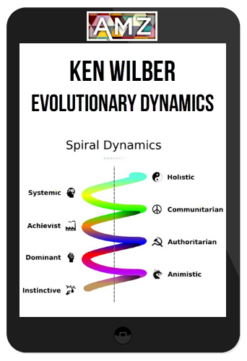Jay Earley – IFS Polarization Course
$60.00 $29.00
Total Sold: 1
»Instant Delivery
Jay Earley – IFS Polarization Course
Polarization is an important concept in Internal Family Systems Therapy (IFS), developed by pioneering psychologist Richard Schwartz. Polarization shows how to understand inner conflict as a battle between two parts. IFS has an excellent method for working with these parts to resolve the conflict.
I have just published a book on polarization which spells out Schwartz’s ideas in detail for therapists to use in their work. Here is an excerpt from the first chapter of Resolving Inner Conflict.
Polarization is often about a specific action or decision, such as the amount of work for Bill to put in. Two parts are at odds over how a client should act. Neither is willing to release its extreme role unless the other part has also released its role. Each fears that if it lets go, the other part will take over and cause serious problems. Therefore, you have to work them both to make it possible for them to shift.
Polarization usually happens between two protectors. In addition to their conflict with each other, each of them is also protecting an exile. They are sometimes polarized about the best way to protect the same exile. In the example with Bill, both the Striver and the Procrastinator were trying to protect an exile who felt like a failure. At other times, each polarized part may be protecting a different exile.
Sometimes the tension and drama of the interaction of polarized parts is, in itself, a form of protection because it distracts the client from the exile they are protecting. The two apparent arch rivals actually are allies in this endeavor.
Sometimes one of two polarized parts will take over for a while and the other part will be strong armed into submission or give up. This can happen for a few hours or days, or sometimes years. Then perhaps a switch will occur and the other part will take over.
When a person has underlying trauma, his or her protectors become more extreme and dysfunctional because of an urgent need to protect the person from re-experiencing the trauma. When one protector becomes extreme and its actions produce hurt and difficulty in the person’s life, this triggers other protectors that try to mitigate this trouble.
These other protectors often become extreme themselves in an attempt to battle the first ones. They may become harsh inner critics, angrily judging other protectors or exiles. Or they may become rigid and extreme in other ways. In either case, they become polarized with the protectors they are fighting. Because of this, traumatized inner systems tend to have much extreme polarization.
The Positive Aspects of Polarized Parts
Even though polarized parts are usually extreme, oftentimes they each hold an energy or quality that is important to the client. For example, with Bill, his Striver held the energy of good work and accomplishment, and his Procrastinator held the energy of relaxation and enjoyment. One common kind of polarization is between the quality of interpersonal connection and the quality of self-assertion, both of which are valuable. Another widespread polarization is between safety/order and autonomy/freedom.
In these situations, you don’t want to erase or diminish the positive energy of either polarized part. You want to help the client have access to this energy in a non-extreme, cooperative form.
In resolving polarization, you aren’t looking to find a bland compromise between the parts, or a negotiated settlement that is purely intellectual. The goal is to have your parts appreciate each other’s strengths and good intentions, work through their extreme protective roles, and learn to cooperate. This gives you much greater access to your creativity and power and makes it possible for you to come up with innovative solutions to conflicts that are usually satisfying to both parts. There is a dynamic, transformative process that results when the Self can hold space for two polarized parts to work together.
More courses from the same author: Jay Earley
DELIVERY POLICY:
When will I receive my course?
You will receive a link to download your course immediately or within 1 to 21 days. It depends on the product you buy, so please read the short description of the product carefully before making a purchase.
How is my course delivered?
We share courses through Google Drive, so once your order is complete, you’ll receive an invitation to view the course in your email.
To avoid any delay in delivery, please provide an Gmail and enter your email address correctly in the Checkout Page.
In case you submit a wrong email address, please contact us to resend the course to the correct email.
How do I check status of my order?
Please log in to Course AMZ account then go to Order Page. You will find all your orders includes number, date, status and total price.
If the status is Processing: Your course is being uploaded. Please be patient and wait for us to complete your order. If your order has multiple courses and one of them has not been updated with the download link, the status of the order is also Processing.
If the status is Completed: Your course is ready for immediate download. Click “VIEW” to view details and download the course.
Where can I find my course?
Once your order is complete, a link to download the course will automatically be sent to your email.
You can also get the download link by logging into your Course AMZ account then going to Downloads Page.





